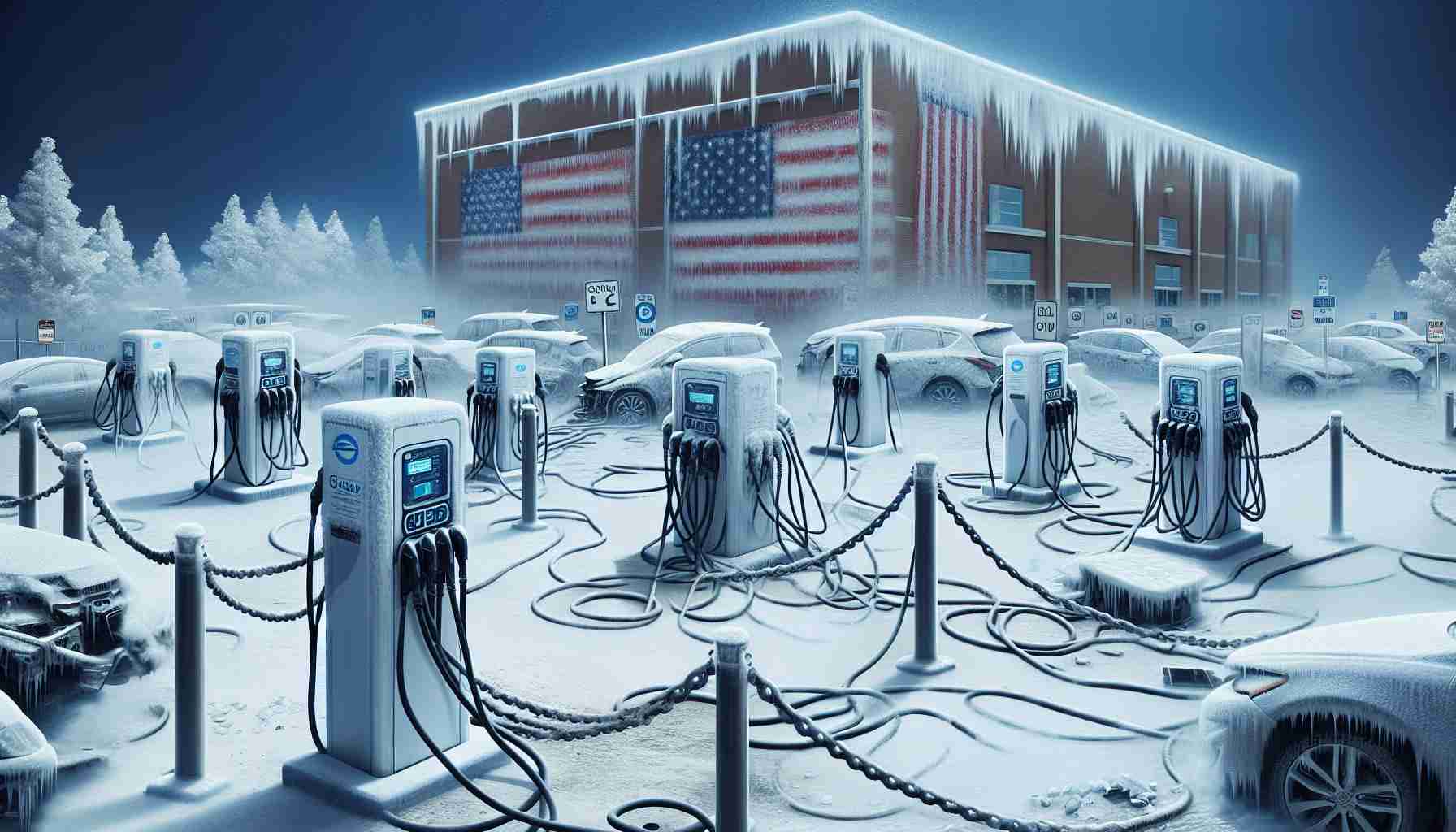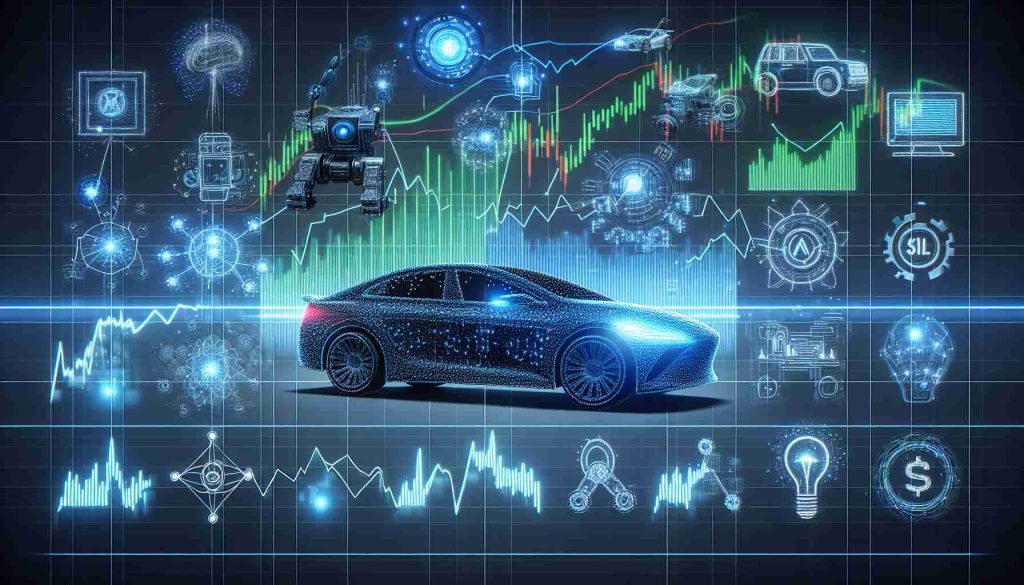- The $5 billion U.S. initiative to expand EV charging infrastructure, NEVI, is currently on hold, causing uncertainty among stakeholders.
- The program aimed to install 500,000 new chargers by 2030, but the halt complicates plans for future development.
- States with existing contracts, like Ohio, continue with projects, but no new agreements are being formed.
- Some experts believe the impact is more perceptual, with the growth of EV infrastructure not solely dependent on government funding.
- Companies such as Tesla focus on urban areas, avoiding NEVI’s placement restrictions, demonstrating independent growth.
- The suspension highlights a political narrative, affecting perceptions of electric vehicle adoption more than tangible development.
- This pause might contribute to political discourse rather than halt technological progression in EV adoption.
A sudden freeze on a crucial U.S. initiative to pour $5 billion into electric vehicle charging infrastructure has left many stakeholders grappling with uncertainty. This program aimed to deploy half a million new EV chargers nationwide by 2030, but its abrupt halt casts a shadow over the sector already reeling from turbulent shifts in policy and trade dynamics.
The NEVI program, a beacon for future-forward infrastructure, now lies in limbo. While some voice concerns about legal ramifications, others suggest that the impact might be more about perception than progress. In states like Ohio, where 19 stations have sprung to life under NEVI’s funding, officials scramble to interpret the freeze’s implications. Projects with signed contracts will proceed, ensuring continuity for some stations. Yet, optimism wavers as states halt any new agreements amidst federal unease.
Industry insiders assert that the growth of EV infrastructure does not hinge solely on government dollars. As observers note, the program, designed to seed public charging along major highways, only represents a sliver of the nation’s much-needed network. Meanwhile, companies like Tesla and Ionna prioritize opportunities in bustling urban areas, sidestepping NEVI’s restrictive placement policies.
The temporary stoppage, say some, impacts only a handful of firms heavily invested in government funds. Others, undeterred, progress independently, citing rising consumer demand in cityscapes.
Ultimately, experts suggest the pause may affect more than just logistics; it alters the narrative surrounding electric adoption. Sparking hysteria rather than hindering development, the suspension might fulfill a political gambit—sowing discord whilst the wheels of innovation turn unabated. As confusion mounts, it seems the messaging, not the machines, carries the weight of change.
Uncovering the Freeze on U.S. EV Charging Infrastructure: What It Means for You
How-To Steps & Life Hacks: Navigating the EV Charging Landscape
1. Stay Informed: Regularly check updates from credible sources about changes in the NEVI program and other government initiatives affecting EV infrastructure.
2. Consider Private Networks: Explore private EV charging networks like Tesla’s Supercharger or ChargePoint, which may provide more reliable expansion unaffected by federal programs.
3. Local Incentives: Investigate local and state incentives for installing home chargers, as these can offset costs and reduce dependence on public infrastructure.
Real-World Use Cases: Adapting to the Pause
Despite the federal freeze, there are successful models in states like California where private companies collaborate with local governments to ensure ongoing development of EV infrastructure. This model could be replicated elsewhere, advocating for proactive regional partnerships.
Market Forecasts & Industry Trends
The EV charging market is expected to continue its growth trajectory, driven by increasing EV sales. According to a report by BloombergNEF, the global EV charging network is projected to grow to support 246 million electric passenger cars by 2030.
Reviews & Comparisons
Unlike government-backed networks, private companies like Tesla offer faster and more reliable charging options. Tesla’s proprietary network boasts broader coverage and compatibility, often earning higher user satisfaction.
Controversies & Limitations: The NEVI Program’s Impact
The abrupt stop of NEVI raises questions about the reliability of government-led initiatives versus private companies’ flexibility. This highlights a potential overreliance on federal programs that can be politically volatile.
Features, Specs & Pricing: EV Charger Varieties
– Level 1 Chargers: Basic home chargers use standard outlets, suitable for overnight charging.
– Level 2 Chargers: Faster chargers commonly found at commercial locations, ideal for quick top-ups.
– DC Fast Chargers: The fastest option, primarily along highways, offering rapid charging capabilities.
Security & Sustainability
Implementing robust cybersecurity measures for EV chargers is crucial, as the hardware becomes a target for potential breaches. Moreover, enhancing the green energy supply to these stations supports sustainability goals.
Insights & Predictions: The Road Ahead
Experts predict that the reliance on EV vehicles will continue to rise regardless of the NEVI pause. However, the narrative surrounding sustainable infrastructure could shift more toward private investment and innovation.
Tutorials & Compatibility
Choose chargers that are compatible with all EV models to ensure versatility and future-proofing. Many new chargers are designed to work with any type, increasing their value over time.
Pros & Cons Overview
Pros:
– Independent Growth: Many companies maintain momentum, unaffected by policy changes.
– Improved Technology: Continued investment in fast-charging technologies.
Cons:
– Policy Dependency: Federal program freezes highlight vulnerabilities.
– Public Confusion: Mixed messages may deter potential EV adopters.
Actionable Recommendations
– Diversify Charging Options: Explore a mix of home and public/private charging options to hedge against uncertainties.
– Advocate for Local Solutions: Support policies or initiatives promoting local investments in EV infrastructure.
Related Links
For more information on electric vehicles and charging infrastructures, visit Department of Energy and Bloomberg.
Embrace innovation and balance reliance on both public and private sectors to ensure a resilient and effective transition to electric vehicles.
















